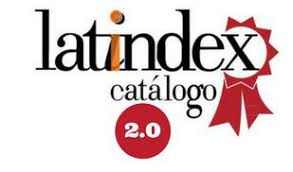TUMOR ODONTOGÉNICO QUERATOQUÍSTICO INFECTADO: CARACTERÍSTICAS IMAGENOLÓGICAS Y SEGUIMIENTO: REPORTE DE CASO
DOI:
https://doi.org/10.31984/oactiva.v1i3.203Palabras clave:
quistes odontogénicos, infecciones bacterianas, diagnóstico por imagen, DeCSResumen
El Tumor Odontogénico Queratoquístico (TOQ) es una neoplasia odontogénica benigna de los maxilares. Suele presentarse durante la segunda y tercera década de vida con un ligero predominio hacia el sexo masculino, su ubicación más común es el cuerpo o rama mandibular. El TOQ no suele presentar sintomatología, pero en algunos casos pueden presentar dolor y aumento de volumen de la zona afectada. Radiográficamente se presenta como una imagen radiolúcida de límites definidos, con bordes festoneados y corticalizados y cuando presenta una infección secundaria estas características pueden verse alteradas. Esta entidad tiene una alta recurrencia debido a que después del tratamiento pueden quedar quistes satélites en el interior del lecho quirúrgico. El presente reporte muestra las características imagenológicas de un TOQ con una infección secundaria de larga data y su persistencia luego del tratamiento quirúrgico.
Descargas
Citas
2 Vázquez D, Gandini P, Ramírez M, Ibero J, Carbajal E. Keratocystic odontogenic tumor: Radiographic findings and surgical management of a clinical case. Av Odontoestomatol 2012; 28(5): 249-54.
3 Robles P, Roa I. Keratocystic odontogenic tumor: Clinicopathological aspects and treatment. J Oral Res. 2014; 3(4):249-56.
4 LacarbonaraM,MarzoG,LacarbonaraV,MonacoA,Capogreco M. Presentation of a keratocystic odontogenic tumor with a genesis: a case report.JMedCaseRep.2014;8(126): 1-7.
5 Zachariades N, Papanicolaou S, Triantafyllou D. Odontogenic keratocysts : review of the literature and report o fsixteen cases. J Oral Maxillofac Surg 1985; 43(3):177-82.
6 White S, Pharoah M. Oral radiology principles and interpretation. 6ta ed. Missouri: Mosby Elsevier ; 2009.
7 Langlais R, Langland O, Nortje C. Diagnostic Imaging of the jaws. 1a ed. Malvern. William y Wilkins. 1995.
8 Ba K , Li X, Wang H, Y Liu, Zheng G, Yang Z et al. Correlation between imaging features and epithelial cell proliferation in keratocystic odontogenic tumor. Dentomaxillofac Rad. 2010 (39): 368–74.
9 Larheim TA, Westesson P. Maxillofacial Imaging. 1a ed. Berlin. Springer. 2006.
10 Zhao Y, Liu B, Cheng G, Wang S, Wang Y. Recurrent keratocystic odontogenic tumours: report of 19 cases. Dentomaxillofac Rad. 2012; 41(2): 96–102.
11 Philipsen HP, Reichart PA: Classification of odontogenic tumours: a historical review. J Oral Pathol Med. 2006; (35):525–29.
12 Kuroyanagi N, Sakuma H, Miyabe S, Machida J, Kaetsu A, Yokoi M et al. Prognostic factors for keratocystic odontogenic tumor (odontogenic keratocyst): analysis of clinico pathologic and immunohistochemical findings in cysts treated by enucleation. J Oral Pathol Med. 2009;(38):386–92.
13 Kimura T, Ohba S, Yoshimura H, Fujita S, Imamura Y, Kitagawa Y et al. Keratocystic odontogenic tumor arising at the mandibular ramus with an impacted tooth: a case report and mimic lesions. Cranio. 2014; 1(1): 1-6.
14 Theodorou S, Theodorou D, Sartoris D. Imaging characteristics of neoplasms and other lesions of the jaw . Odontogenic tumors and tumorlike lesions. Clin Imag. 2007;31(2):114–9.
15 Dellán A, Villaroel M, Hernandez-Andara A. Aplicación de las unidades Hounsfield en tomografia computarizada como herramienta diagnóstica de las lesiones intraóseas del complejo maxilo mandibular: estudio clínico de diagnostico. Rev Odontol Univ Cid Sao Paulo. 2015; 27(2): 100-11.
16 Cifuentes D , Aguirre G. Pautas para la aplicación controlada de medios de contraste endovasculares. Rev Fac Med. 2014;22(1):78-83.
17 Davoodi P, Rezael-Soufi L, Jazaeri M, Langaroodi A, Hoselni S. Submandibular abscess due to an infected keratocystic odontogenic tumor asocciated with simultaneous ocurrence of a traumatic bone cyst: a rare case report. J Contemp Dent Pract. 2013; 14(1): 133-6.
18 De Azambuja S, Bastos A, Couto P, Motohiro O, Ditzel V, Westphalen F. Spontaneus eruption of a canine after marsupialization of an infected dentigerous cyst. Am J Orthod Dentofac. 2008; 137 (5): 690 -3.
19 Bodner L, Bar-Ziv J. Characteristics of bone formation following marsupialization of jaw cyst. Dentomaxillofac Rad. 1998; 27: 166 – 71.
20 Kawai T, Murakami S, Hiranuma H, Sakuda M. Healing after removal of benign and tumors of the jaws. Oral surg Oral Med O. 1995; 79: 17-25.
Publicado
- Resumen 462
- PDF 485
- HTML 81
Cómo citar
Número
Sección
Licencia
Se autoriza la reproducción total y parcial, y la citación del material que aparece en la revista, siempre y cuando se indique de manera explícita: nombre de la revista, nombre del autor(es), año, volumen, número y páginas del artículo fuente. Las ideas y afirmaciones consignadas por los autores están bajo su responsabilidad y no interpretan necesariamente las opiniones y políticas del Consejo Editorial de la Revista OActiva ni de la Universidad Católica de Cuenca.
La Revista OActiva utiliza la Licencia Creative Commons de Reconocimeinto-NoComercial-CompartirIgual 4.0, que es la siguiente: CC BY-NC-SA 4.0 Internacional.











